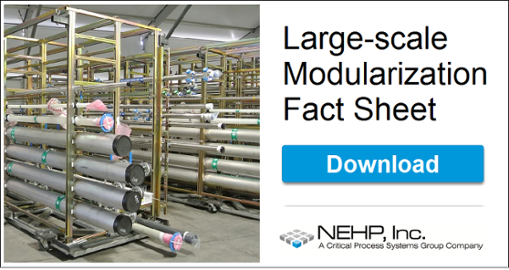What is Non-Utilized Talent?
/8%20wastes%20of%20lean%20-%20non-utilized%20talent.png?width=300&name=8%20wastes%20of%20lean%20-%20non-utilized%20talent.png) Non-Utilized Talent is a key waste described in the lean construction ideology. It is a waste that is often hidden behind more tangible ones such as defects, time and transportation. This waste pertains to the loss or incomplete use of human capability and resources within a production process.
Non-Utilized Talent is a key waste described in the lean construction ideology. It is a waste that is often hidden behind more tangible ones such as defects, time and transportation. This waste pertains to the loss or incomplete use of human capability and resources within a production process.
Causes of Non-Utilized Talent
In addition to a simple lack of recognition of talent, the root cause of this waste is generally embedded within the structure of an organization. Companies that have strict bureaucracy and “Order of Command” tend to have a greater issue with this lean waste. In essence, employees are assigned and generally expected to complete tasks in a "vacuum," leaving little room for operator input or advancement outside of completion of that task. This can be considered the antithesis of continuous improvement.
According to research done by Hosseini et al., some companies will seek to limit employee development in the expectation that employees who advance their workplace talents and capabilities will seek "better" employment opportunities elsewhere or higher compensation for the given task.[1]
/Combating%20non-utilized%20talent.jpeg?width=600&name=Combating%20non-utilized%20talent.jpeg)
Ultimately, the more resistant an organization is toward a culture of reward, the less likely that effective ideas will reach production value. If improvements are only sought at the managerial level and higher, the full pool of talent and expertise within a company is not being optimized.
Effects of Non-Utilized Talent
As this ever-changing world clearly demonstrates, humans aren't built for empty routines and repetition. We're designed for purpose and cause, to crave exploration, experimentation, and learning. In fact, there's a part of our brains which scientists have coined "the seeking system" that rewards us for taking part in these activities.
If we are inhibited from following our innate impulses in the workplace, or if we are not listened to, we won't feel valued and we will be more likely to leave for a more rewarding and fulfilling position. By ignoring cross training, self-improvement, skills advancement, process improvements, new responsibilities, work flexibility, reward and appreciation, organizations risk facing a higher turnover rate, employee frustration, and having to pay higher salaries for certain classifications.
Solutions for Non-Utilized Talent
The solution for this lean waste is relatively simple in theory but can be tricky in implementation. Leadership and training among employees has proven to be a promising solution, however this can be a challenge to implement if organizational beliefs and barriers to the contrary are deeply ingrained.
Little by little, if employees can be viewed not just as a hand to the company, but a mind as well, this will create a culture that invites employees to be part of the work, not just the one who does it. Employees that take pride in what they do are unlikely to seek employment elsewhere, and the productivity and quality of their work is apt to increase when there is plenty of ownership to be had.
Inclusion of employee ideas is not something to be feared but to be embraced. Employees at any level can offer valuable insights about the job they perform every day. They witness first hand certain inefficiencies and understand how it can be improved. Do not let this feedback go untapped.
Construction organizations that successfully recognize under-utilized talent, and channel it toward appropriate forms of development and training, will help usher in a new era of employee satisfaction, retention, and overall productivity.
If you would like more information about how we can help you with construction productivity improvement, please feel free to access our construction integration and large-scale modularization fact sheet below:
OR
Click here to visit our Lean Construction Integration page
Sources:
[1] Hosseini, S., Nikakhtar, A., Wong, K. and Zavichi, A. (2012). Implementing Lean Construction Theory into Construction Processes' Waste Management. ICSDC 2011. via https://www.ligsuniversity.com/en/publication/not-utilizing-talent
